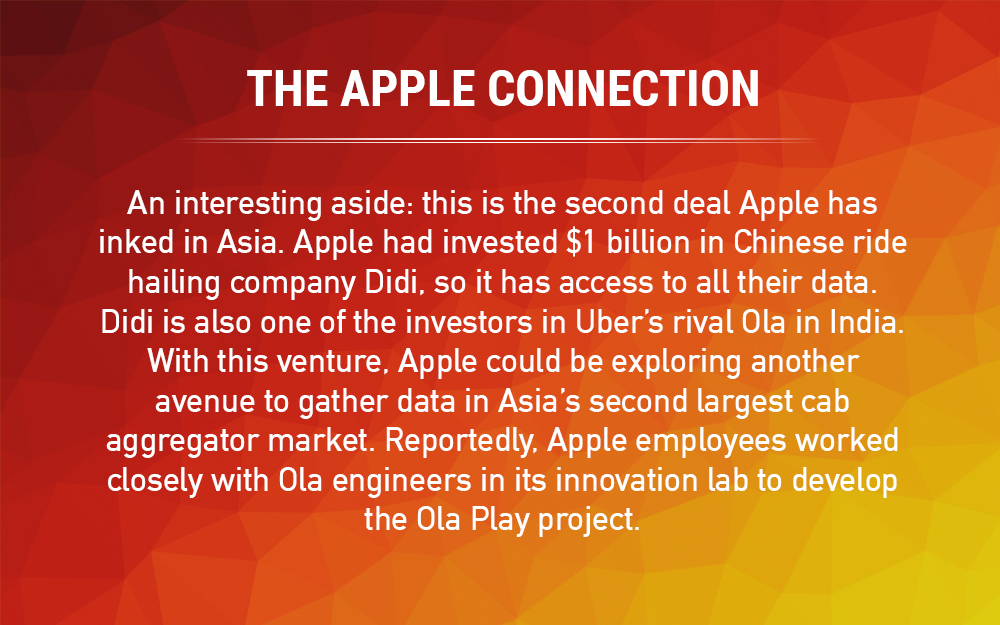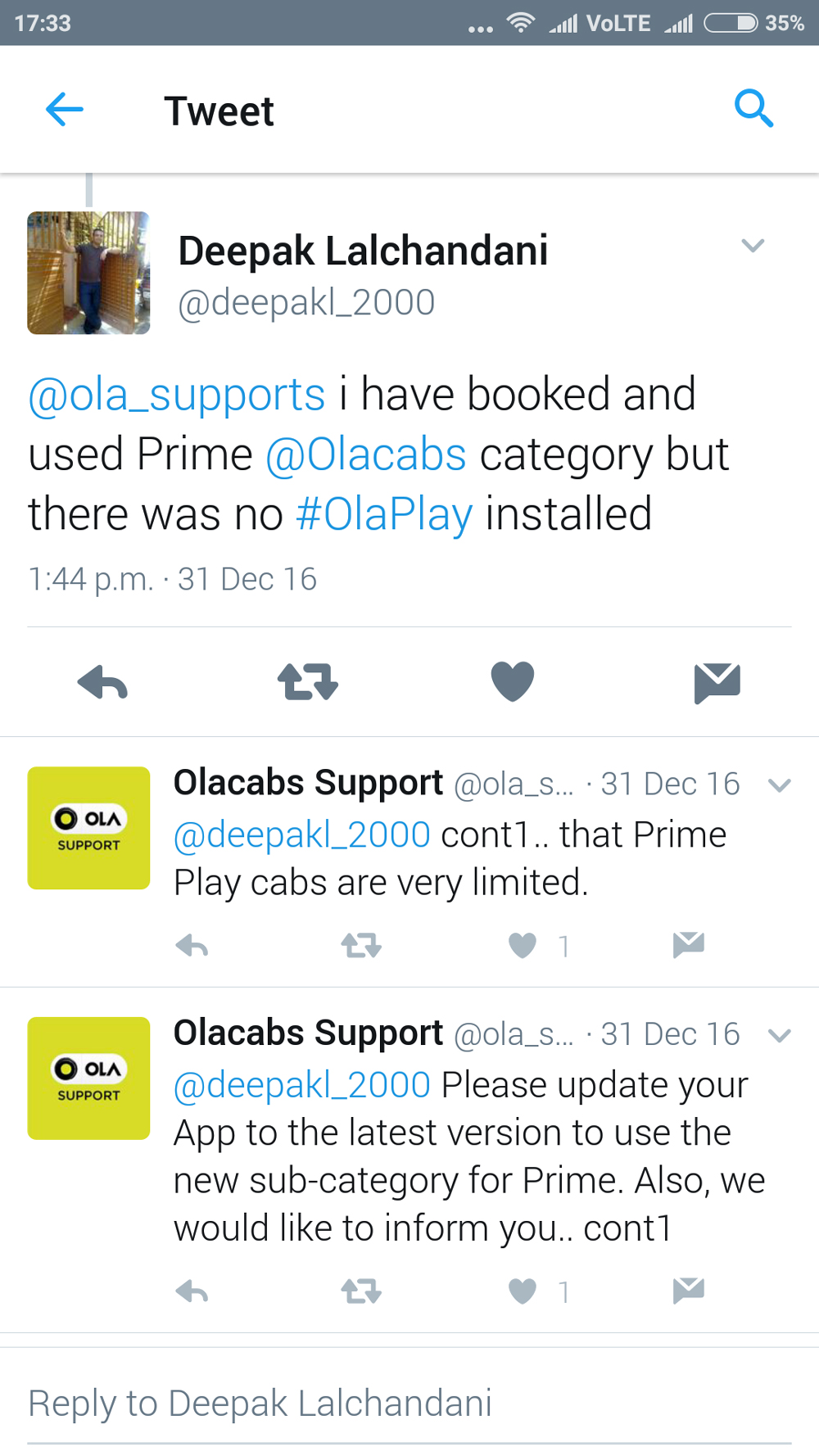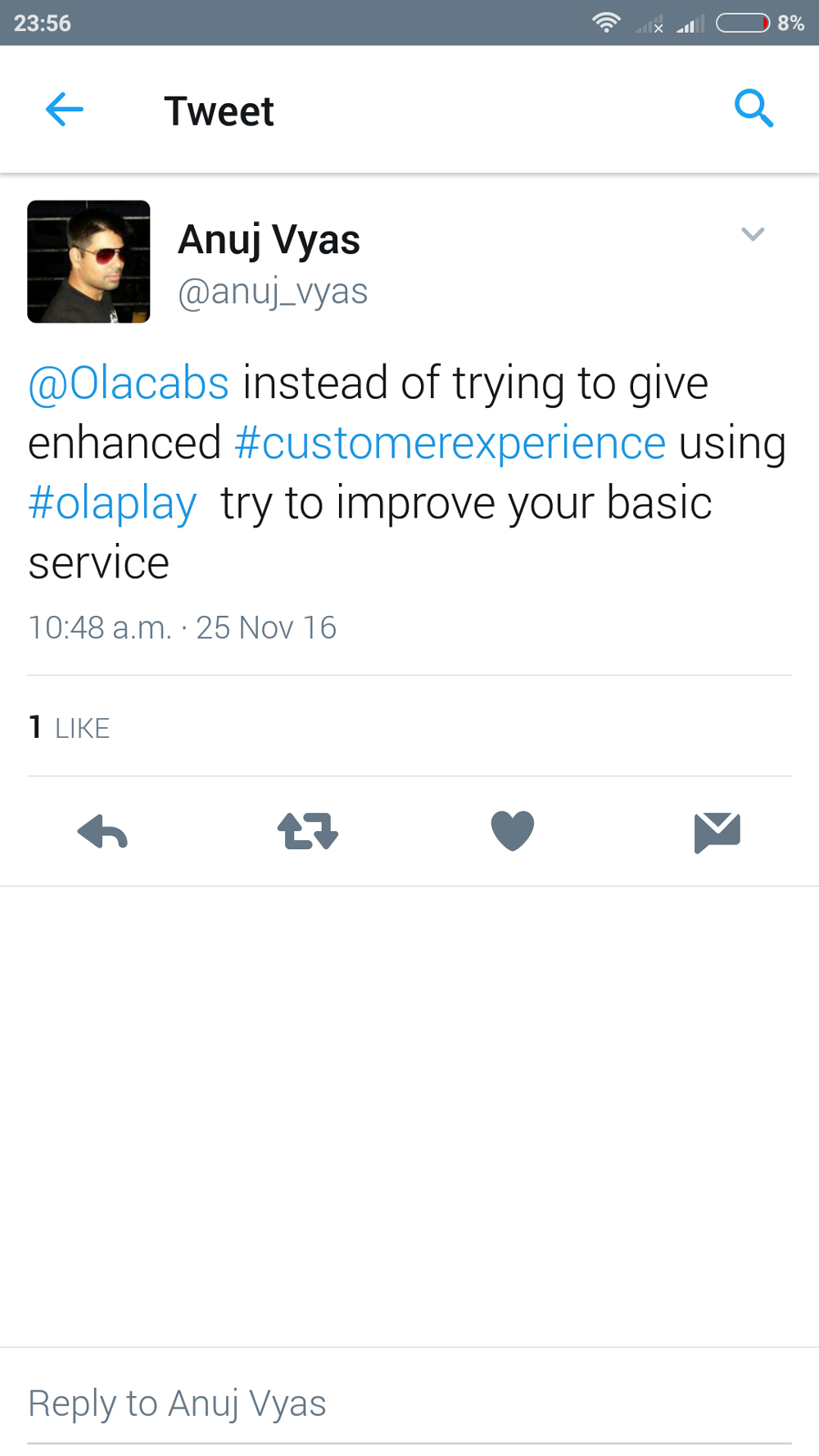In November 2016, Ola called for a high-profile press conference, promising to announce “something big”. The event was held on November 22 at a five-star hotel in Bengaluru, and several tech journalists from across India were flown in for the event. It was all very hush-hush, leading to much speculation among journos about what Ola would announce — an acquisition or a large funding or something truly revolutionary in terms of technology. The build-up certainly indicated it was going to be, to the new US President’s favourite word, ‘yuge’.
Ola announced in November last year that it had developed an in-cab entertainment system called Ola Play, which would be available to members of Ola Prime
At the press event, Ola announced that it had developed an in-cab entertainment system called Ola Play, which would be available to members of Ola Select, its highend membership system which gives member riders privileges like best-in-fleet cars, top-rated drivers, complimentary Wi-Fi etc. Ola Play is said to provide select cars with “a range of infotainment options and enhanced driver assistance” through a screen mounted on the back of the front passenger-side seat. Ola tied up with content creators like The Viral Fever (TVF), All India Bakchod (AIB), as well as Apple Music, Sony Liv, Audio Compass and Fynd to provide music, radio, and shows during rides for passengers.

But, the thing is, it’s been two months and Ola Play continues to be a highly niche product, and Ola continues to be secretive about the number of people who have actually used it. For one, we don’t really know how many Prime customers the company has registered, either before or after the product was launched. A quick audit among acquaintances revealed that most hadn’t opted for a Prime membership, and some who had it haven’t managed to book a ‘Prime Play’ car (as the Play-enabled cars are referred to on the Ola app) because they did not seem to be too commonly available. On December 31, the Ola prime cab I took did not have any hardware installed.
A quick audit revealed that most hadn’t opted for a Prime membership, and some who had it haven’t managed to book a ‘Prime Play’ car because they are not too commonly available
Which all indicates that it is still an experiment of sorts. In fact, in the two months since its glitzy launch, several features of Ola Play have still not been rolled out for public use. Ola partnered with Audio Compass — an app that allows users to get audio tours of neighbourhoods, monuments, museums, and cities — for Ola Play. In an email chat, Gautam Shewakramani, the founder of Audio Compass, confirmed that the company is still testing the integration on a small scale and that it has not rolled out the functionality for the public.
Ola Play paused
Reportedly, the project took seed in 2015, when an Ola employee came up with the idea of providing its customers an in-car experience that would be different from their competitors and change the game for Ola in Indian market. The founder and CEO of Ola, Bhavish Aggarwal, is said to have been excited by the idea and charged the technology team headed by co-founder and CTO Ankit Bhati with developing the technology necessary for this integration. It took the in-house team in their innovation lab a year to build Ola Play. For the team, this was not just another project as Aggarwal was said to be monitoring it closely. The company also forged content partnerships with Apple, Sony Liv, TVF, AIB, Audio Compass and Fynd (a shopping site) over this period.
Technically, Ola Play is not the world’s first connected car platform. Uber experimented and implemented a similar concept in the United States with Spotify back in 2014. In 2016, Uber in India updated its app which allowed users to listen to music via Gaana. Ola’s content partnerships are, however, wider.
Technically, Ola Play is not the world’s first connected car platform. Uber experimented and implemented a similar concept in the United States with Spotify back in 2014
Having put so much effort into the project, what exactly is stopping Ola from taking it mainstream since it clearly believes the value-add will attract customers and set it apart from rival Uber? Is it the cost of installing the necessary hardware in its cabs at scale? Shouldn’t the company have anticipated this? Ola did not reveal the investment that went into developing Ola Play and also the number of prime customers registered with them as of now, but the company has said it wants to extend the service to 50,000+ cars by March 2017. “Their major investment will come when they have to get the hardware for wider scale. But it will be interesting to see how they scale it up,” said a source, who has worked with Ola earlier.
Focus on the basics
Ajeeth Swaminathan, a resident of Bengaluru, had opted for the Ola Select membership (at Rs 499 a month) a month ago, which allows him to use Ola Play during Prime rides and also guarantees no peak pricing, Prime cabs at Mini fares, no online queuing up for cabs etc . However, he is not very pleased with the the paid service as he says he is still subjected to driver cancellations, unclean cars and delays in arrival.
Several users have raised similar issues on social media sites. Some of them urged Ola to improve basic services instead of trying to embed enhanced customer experiences.


An informal survey of about 10 regular Ola users tells us that most want fewer cancellations, better GPS tracking by drivers and more cars on the road rather than “a fancy entertainment system”.
One such customer from Bangalore, Vandana Udupi, a regular user of Ola said, “I would prefer fewer calls from drivers who never seem to be able to track their rider address. Their GPS tracking capability should be improved. The other thing is on-time arrival of cabs.”
“I would prefer fewer calls from drivers who never seem to be able to track their rider address. Their GPS tracking capability should be improved. The other thing is on-time arrival of cabs” — Vandana Udupi, Ola user
During the launch, Aggarwal had said: “The impact on consumer comfort, convenience and productivity can be transformative which will further propel ride-sharing as first choice of mobility for many more millions,” but experts in the industry and users believe that value-added services are no good when most users are only looking for basic services at value-for-money prices.
Anil Kumar, CEO and managing partner of Redseer Consulting, feels that such value-added services will not bring a significant addition to Ola’s revenues because of the relatively small base of users and less traction. “We do not see any significant shift due to this service, precisely because of a low userbase and this being a value-added service in a market where the key decision-making criteria is as low as compliance with ETA (expected time of arrival),” says Kumar.
Experts in the industry and users believe that value-added services are no good when most users are only looking for basic services at value-for-money prices
Ola has been providing free Wi-Fi services in its premium cars for months now. The returns from a more esoteric service such as Ola Play can only be seen over a longer period of time, feel experts, and that when the service is extended to a large enough pool of people, not the handful for whom it is seemingly available today. It is also important to note that Ola founder Bhavish Aggarwal has the reputation of killing projects when they fail to scale up in the first few months after their launch. Ola shut its Ola Café and its hyperlocal grocery delivery service, Ola Store, within few months of their launch; maybe also because the company faced stiff competition from other businesses in the same vertical.
That raises the question of whether Ola’s “big” play is something the company needs to spend substantial resources on right now, when it has bigger problems to solve.
Subscribe to FactorDaily
Our daily brief keeps thousands of readers ahead of the curve. More signals, less noise.
To get more stories like this on email, click here and subscribe to our daily brief.
Photos: Ola Cabs








